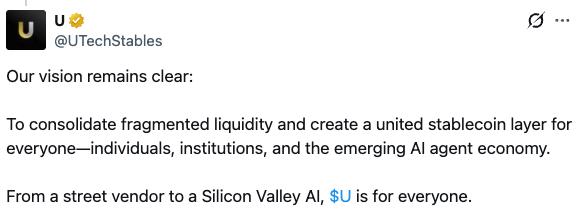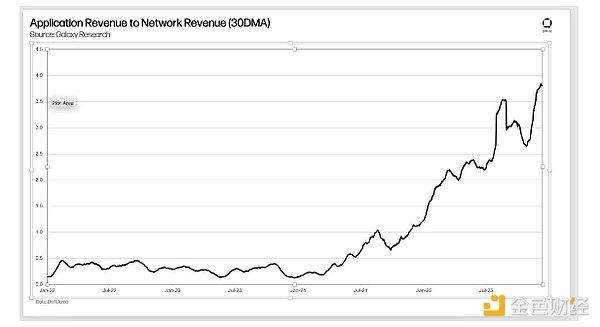Will the Fed cut rates twice this year? Not necessarily
This article is machine translated
Show original
The major changes announced and expected to be announced by the U.S. government in trade, immigration, and fiscal spending mean that interest rate expectations may change later this year.
The FOMC on Wednesday (March 19) announced that it would keep interest rates unchanged, while the Economic Projections showed that it may cut rates twice this year, the same as the forecast made at the FOMC meeting in December last year.
The FOMC's wait-and-see stance was enough to boost Wall TRON. The Dow Jones Industrial Average rose 384 points, or 0.9%, on Wednesday, the S&P 500 index rose 1.1%, and the NASDAQ Composite index rose 1.4%.
However, investors should not be complacent due to the forecast of two rate cuts, as the major changes announced and expected to be announced by the U.S. government in trade, immigration, and fiscal spending mean that interest rate expectations may change later this year.
In other words, the FOMC may cut rates twice, more than twice, less than twice, or not at all.
FOMC Chairman Powell said at the press conference on Wednesday that "the level of uncertainty is exceptionally high, and we need to watch how things evolve. As far as I know, no one has a lot of confidence in their own forecast."
The probability of rate cuts at the next four FOMC meetings as predicted by the interest rate futures market.
Note: The current federal funds rate target range is 4.25%-4.5%. Data as of 3:25 pm EDT on March 19.
Source: CME FOMC Watch
The FOMC expects the U.S. economy to slow this year, with inflation rising, meaning the FOMC expects the U.S. economy to enter stagflation this year. The Economic Projections show that the FOMC has revised down its preliminary forecast for U.S. real GDP growth in 2025 from 2.1% in December last year to 1.7%, and expects the unemployment rate to be 4.4% this year, higher than the previous forecast of 4.3%.
The upward revisions to inflation expectations for 2025 and 2026 are particularly noteworthy. The FOMC currently expects the PCE price index to rise 2.7% by the end of this year, higher than the 2.5% forecast in December. In addition, the FOMC expects inflation not to fall to the FOMC's 2% target until 2027.
With inflation expectations rising, the FOMC may continue to remain on hold this year without cutting rates, but Powell pointed out that if the number of layoffs increases significantly, it could quickly push up the unemployment rate, prompting the FOMC to cut rates multiple times for the rest of the year.
During the nearly 60-minute press conference, Powell used the word "uncertainty" 18 times. FOMC officials also noted in the post-meeting statement that "uncertainty about the economic outlook has increased."
One reason for the rising uncertainty about the economic outlook is the potential impact of Trump's tariffs, Powell said: "The Economic Projections do not show inflation continuing to decline, and tariffs are a major reason."
Powell said that the rise in prices due to tariffs is the FOMC's "baseline scenario," but the inflation caused by tariffs will be a "temporary phenomenon."
Powell said: "If the inflation caused by tariffs goes away quickly without us taking action, then we may not need to be too concerned about inflation, and that will depend on how quickly the inflation caused by tariffs rises and whether inflation expectations are well-anchored."
Powell said that even without considering the impact of tariffs, the path of inflation in the U.S. this year could be uneven. He pointed out that commodity inflation has risen sharply in the first two months of the year, exceeding any substantive impact of tariffs.
But Powell reiterated that he believes the FOMC's interest rate policy can well address the changing economic dynamics. He said officials are focused on "hard data" rather than the "soft data" such as the sharp declines in sentiment indicators and confidence indicators in recent months.
Powell said: "Hard data such as employment and consumer spending remain healthy."
Powell downplayed the significance of the sharp rise in longer-term inflation expectations in the University of Michigan consumer confidence survey, calling it an "outlier." He pointed out that inflation expectations measured by other surveys, including the one conducted by the New York Federal Reserve, remain stable.
The FOMC's wait-and-see attitude on economic activity and inflation means that FOMC officials may need several more months to gain the "clarity" they are seeking.
Fitch's chief economist Brian Coulton commented: "The FOMC's sharp downgrade of its economic growth forecast, coupled with an upward revision to its core inflation projection, underscores the adverse impact of the U.S.'s significant tariff hikes, as well as the recent survey showing a sharp rise in U.S. households' inflation expectations over the next five years, making the FOMC's job more difficult and suggesting officials will remain on hold for a considerable period, delaying further rate cuts."
RSM chief economist Joe Brusuelas pointed out that the FOMC's wait-and-see stance may accelerate the impact of U.S. trade policy, saying: "Given the high degree of uncertainty around the magnitude and scope of the trade shock, the FOMC's wait-and-see stance will be challenged. The key takeaway from this rate decision for businesses, policymakers, and investors is to avoid risk until the magnitude of the trade shock can be determined and new trade scales and financial rules are established."

Source
Disclaimer: The content above is only the author's opinion which does not represent any position of Followin, and is not intended as, and shall not be understood or construed as, investment advice from Followin.
Like
Add to Favorites
Comments
Share





